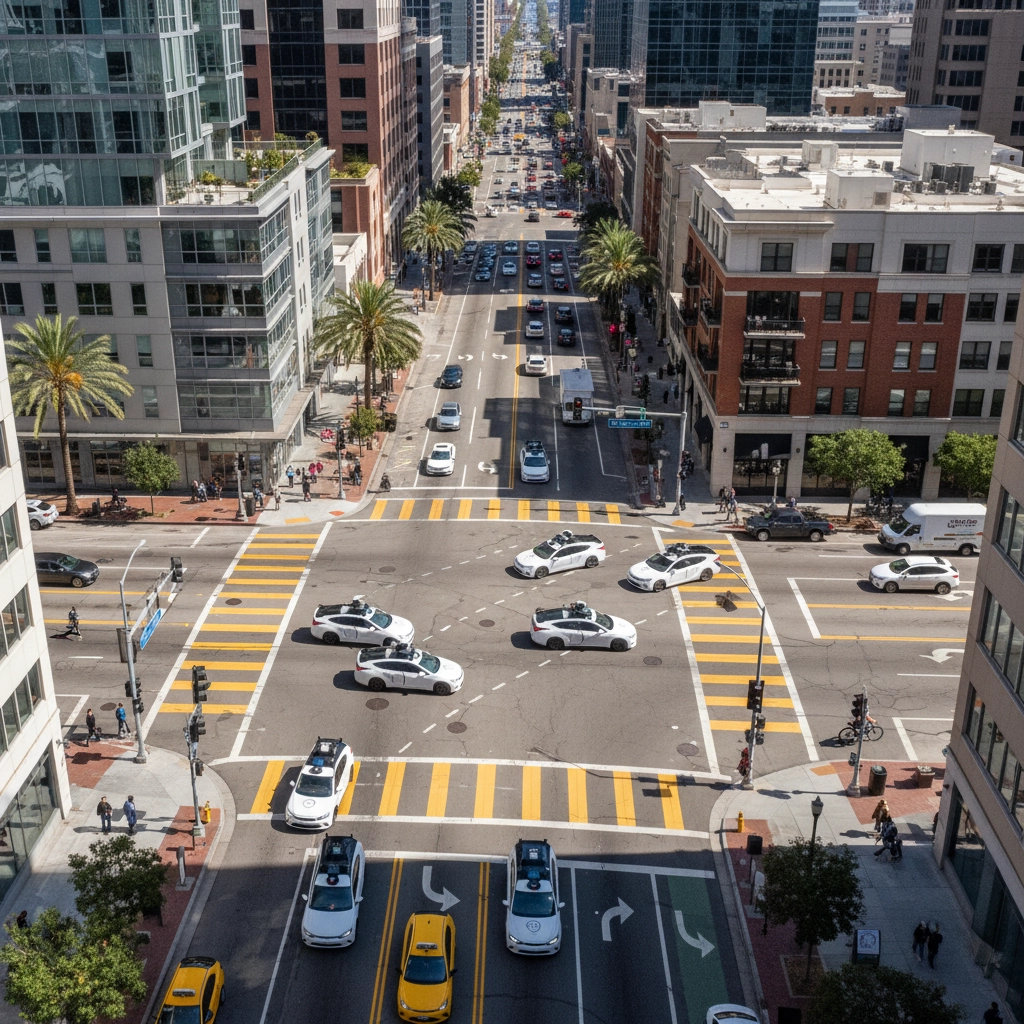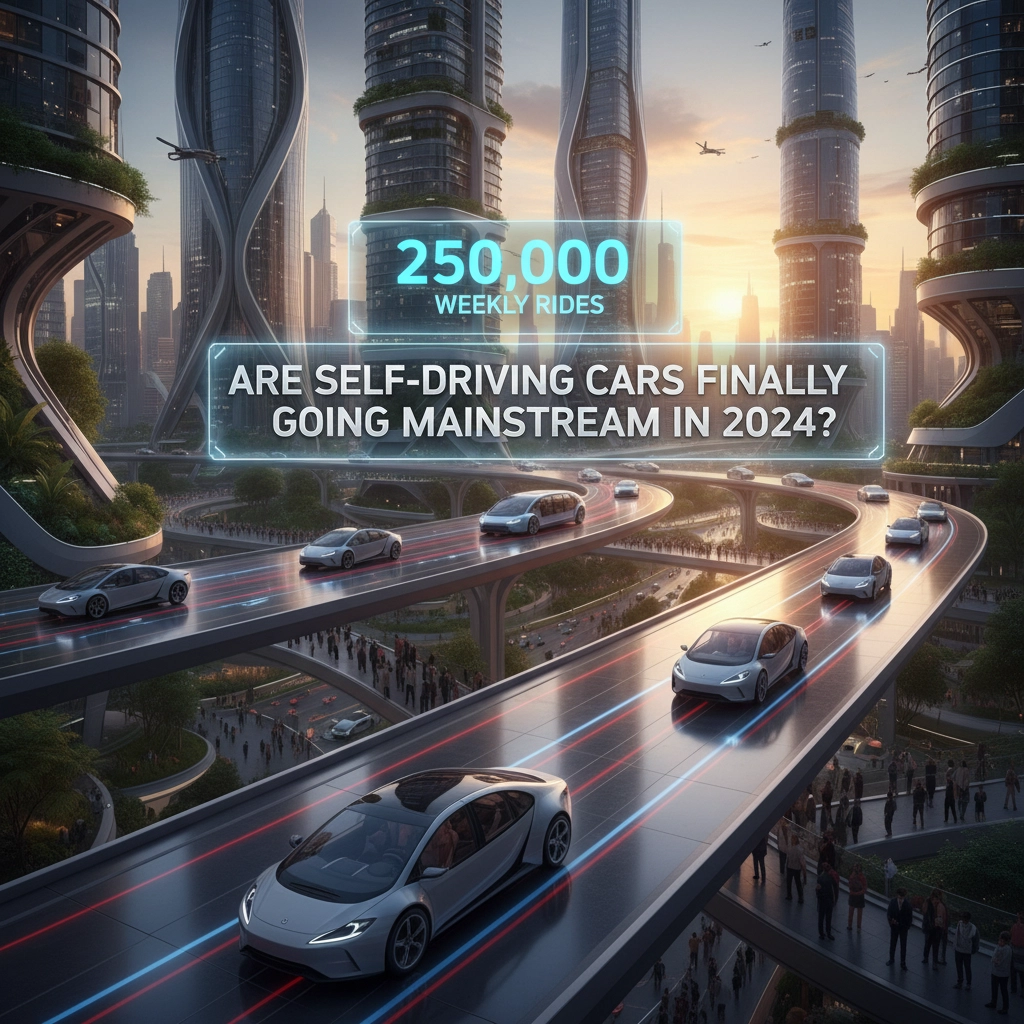Remember when self-driving cars felt like something out of The Jetsons? Well, buckle up, because Waymo just hit a milestone that's got everyone talking. They're now handling 250,000 rides per week, and suddenly those robot taxis don't seem so futuristic anymore.
But here's the thing: that massive number wasn't actually reached in 2024. Waymo crossed the 250,000 weekly rides threshold in early 2025. Still, the growth throughout 2024 was absolutely wild, setting the stage for this breakthrough moment.
So what does this really mean? Are we finally living in the age of mainstream self-driving cars, or are we still just scratching the surface?
The Numbers Don't Lie – Waymo's Explosive Growth
Let's talk about just how crazy Waymo's growth has been. Back in May 2023, they were doing about 10,000 rides per week. By August 2024, they'd hit 100,000. Then 150,000 by December 2024. And boom, 250,000 by April 2025.
That's a 25-fold increase in less than two years. To put that in perspective, if your weekly grocery bill grew at the same rate, you'd be spending $6,250 on milk and cereal.

Here's what that growth looks like in real numbers:
- Over 4 million fully autonomous rides completed in 2024 alone
- More than 5 million total rides since they started commercial operations
- 50+ million cumulative miles driven by December 2024
- 700,000+ monthly paid trips as of March 2025
The average ride covers about 6.67 miles, pretty typical for most city trips. And here's something interesting: people aren't just trying it once for the novelty. The repeat usage suggests folks are actually finding these rides practical and reliable.
I remember talking to my friend Sarah who used Waymo during a business trip to Phoenix last year. She was skeptical at first, who wouldn't be about getting in a car with no driver? But after her first ride, she was hooked. "It was smoother than most Uber drivers," she told me. "Plus, no awkward small talk."
Safety First – Why Robots Drive Better Than Humans
Here's probably the most important part of this whole story: safety. Independent studies show that Waymo's self-driving cars reduce injury-causing crashes by about 80% compared to human drivers.
Think about that for a second. These cars are already safer than the average person behind the wheel. They don't get tired, they don't check their phones, they don't have road rage, and they definitely don't drive after a few beers.

The safety data is what's really convincing city officials and regulators to give these services the green light. It's one thing to have cool technology, it's another to have cool technology that's actually making roads safer for everyone.
This safety advantage is addressing one of the biggest concerns people have about driverless cars. Most of us have heard horror stories about early autonomous vehicle accidents, but the real-world data tells a different story. These systems have gotten really, really good at not crashing into things.
Where Can You Actually Catch a Ride?
So where can you hop in one of these robot taxis right now? Waymo operates in five cities: Phoenix, San Francisco, Los Angeles, Austin, and Atlanta. They're planning to add Miami by the end of 2025, with approval to operate in 22 cities total along the San Francisco peninsula.
But here's the catch, even in these cities, the service isn't everywhere. You can't just summon a Waymo from anywhere like you might with Uber or Lyft. They operate in specific neighborhoods and zones where they've mapped everything out in extreme detail.

That said, the expansion is happening fast. Waymo has been pretty strategic about picking cities with good weather (sorry, Boston winters) and relatively predictable traffic patterns. Phoenix was their proving ground, but San Francisco's hills and fog represent a much tougher test, and they're handling it well.
The integration with Uber's app in some cities is also making these rides more accessible. Instead of downloading a separate app, people can book a Waymo ride right through Uber. It's that kind of mainstream integration that signals we might be approaching a tipping point.
Are We There Yet? The Reality Check
So, are self-driving cars finally mainstream? Well, it depends on how you define "mainstream."
250,000 weekly rides sounds impressive until you realize that traditional ride-hailing services handle millions of rides daily across the country. Waymo's still operating in just a handful of cities, and even there, they're not available everywhere.

But here's what's changed: these cars have gone from being a weird science experiment to just another part of the transportation landscape in the cities where they operate. People in Phoenix aren't posting Instagram stories about their "crazy robot car ride" anymore: they're just using them to get to work.
The technology clearly works. The safety data is solid. The user experience is getting smooth. What we're seeing now is the slow, methodical expansion that comes when a new technology starts proving itself in the real world.
The biggest barriers aren't technical anymore: they're regulatory and logistical. Getting approval in new cities takes time. Mapping every street, traffic light, and construction zone takes time. Building public trust takes time.
But that 250,000 number? It's not just a milestone: it's proof that we've moved past the "proof of concept" stage. This is now a real business serving real customers who depend on these rides.
The question isn't really whether self-driving cars will go mainstream anymore. The question is how fast it'll happen and which cities will be next. Because if the growth from 2023 to 2025 tells us anything, it's that this technology isn't slowing down.
What do you think: would you trust a robot to drive you to your next important meeting?







